Abstract
A cylinder plate bioassay for 5-fluorocytosine (5-FC) is described which permits determination of 5-FC concentrations in biological fluids in the presence of amphotericin B. Using this assay, we determined serum concentrations in 12 patients after a single dose of drug and in 8 patients receiving daily 5-FC at 6-hr intervals (4 to 120 days). Drug was detectable in serum as early as 0.5 hr and concentrations were measurable as long as 24 hr after a dose, regardless of renal function. Peak concentrations occurred 6 hr after the initial drug dose, but were seen between 1 and 2 hr after a dose in all patients receiving a minimum of 4 days of therapy. Mild to moderate renal impairment produced marked increases in peak 5-FC concentrations in the serum of a group of eight patients on three different dosage schedules. Five patients were studied before and after amphotericin B-induced renal insufficiency. Peak concentrations increased from 14 to 142% concomitant with the change in renal function. Parallel studies in rabbits confirmed the results in our patients. 5-FC half-life in the serum of 10 rabbits increased from 3.35 ± 0.27 to 24.63 ± 0.70 hr after experimentally induced acute renal failure. Concentrations of 5-FC in the cerebrospinal fluid of five patients ranged from 17 to 62 μg/ml and were 74.4 ± 5.6% of simultaneously determined serum concentrations. The effect of renal function on 5-FC concentrations in cerebrospinal fluid was similar to that seen with serum.
Full text
PDF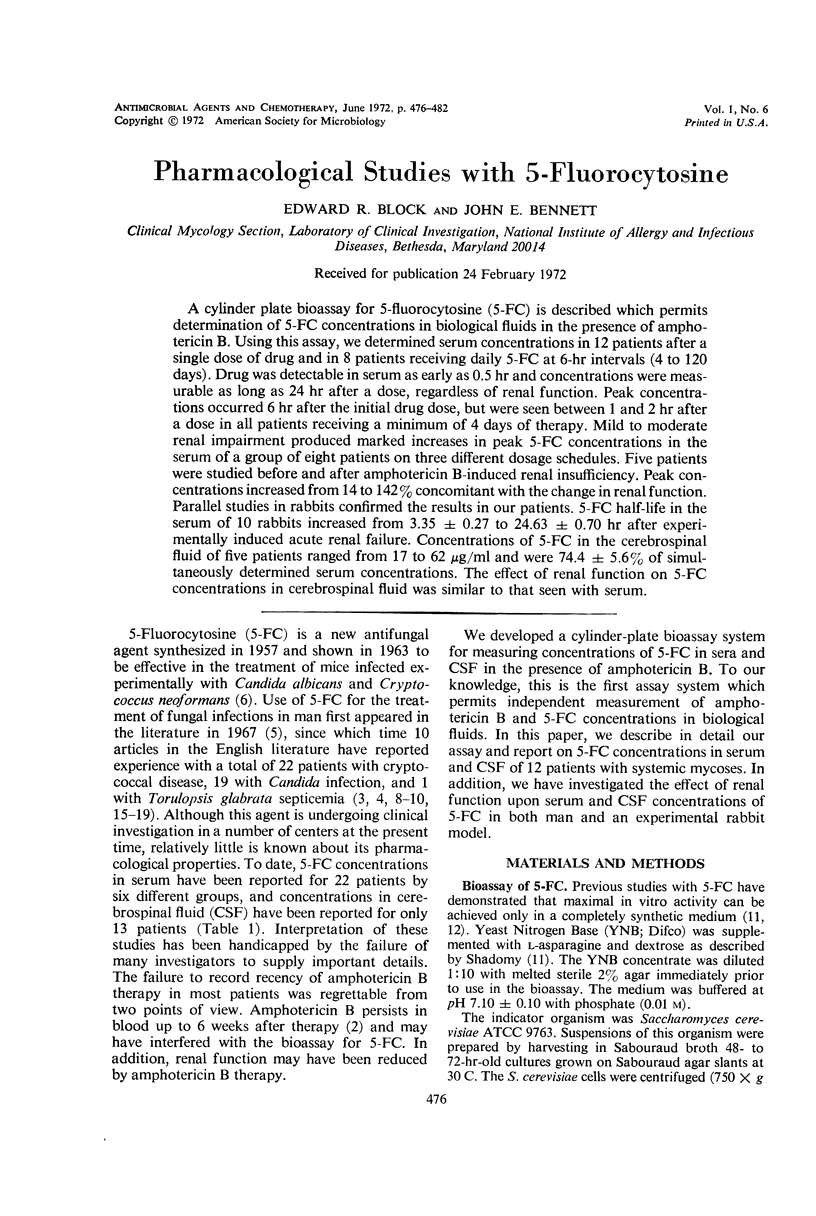
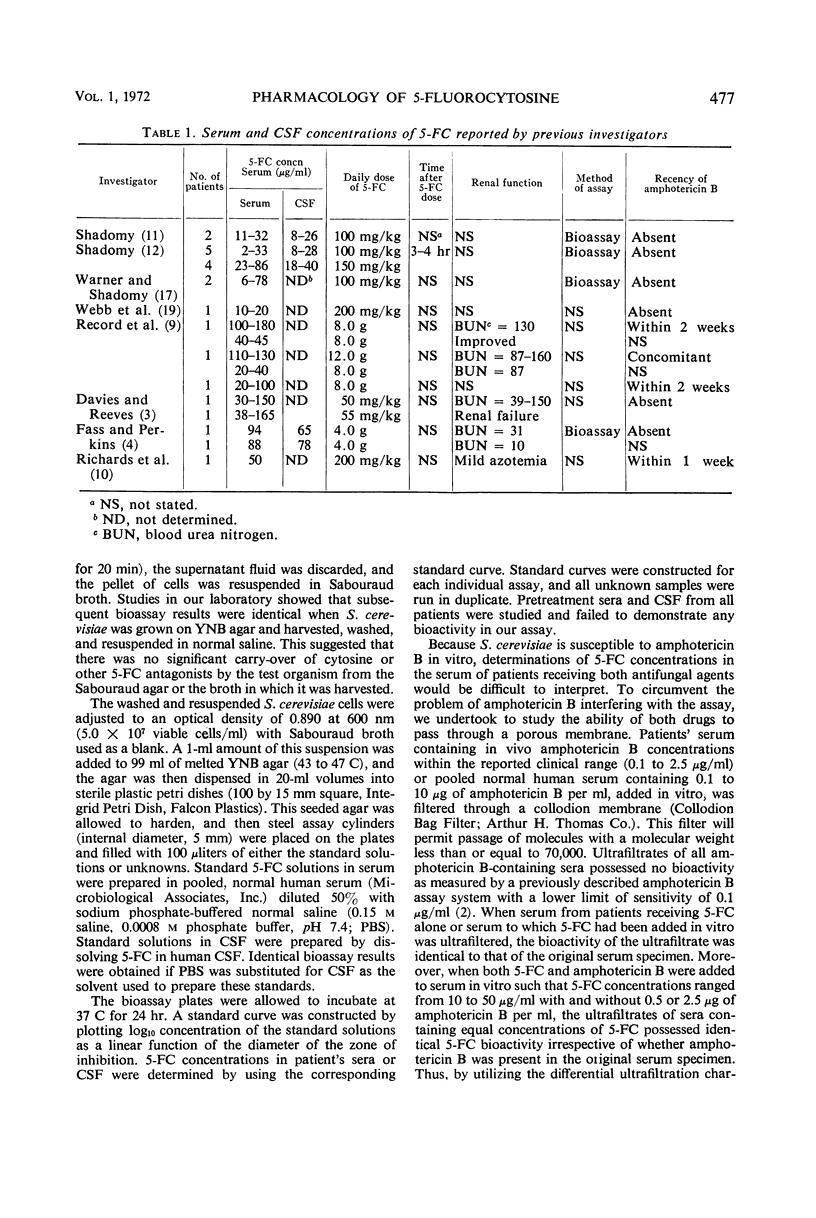
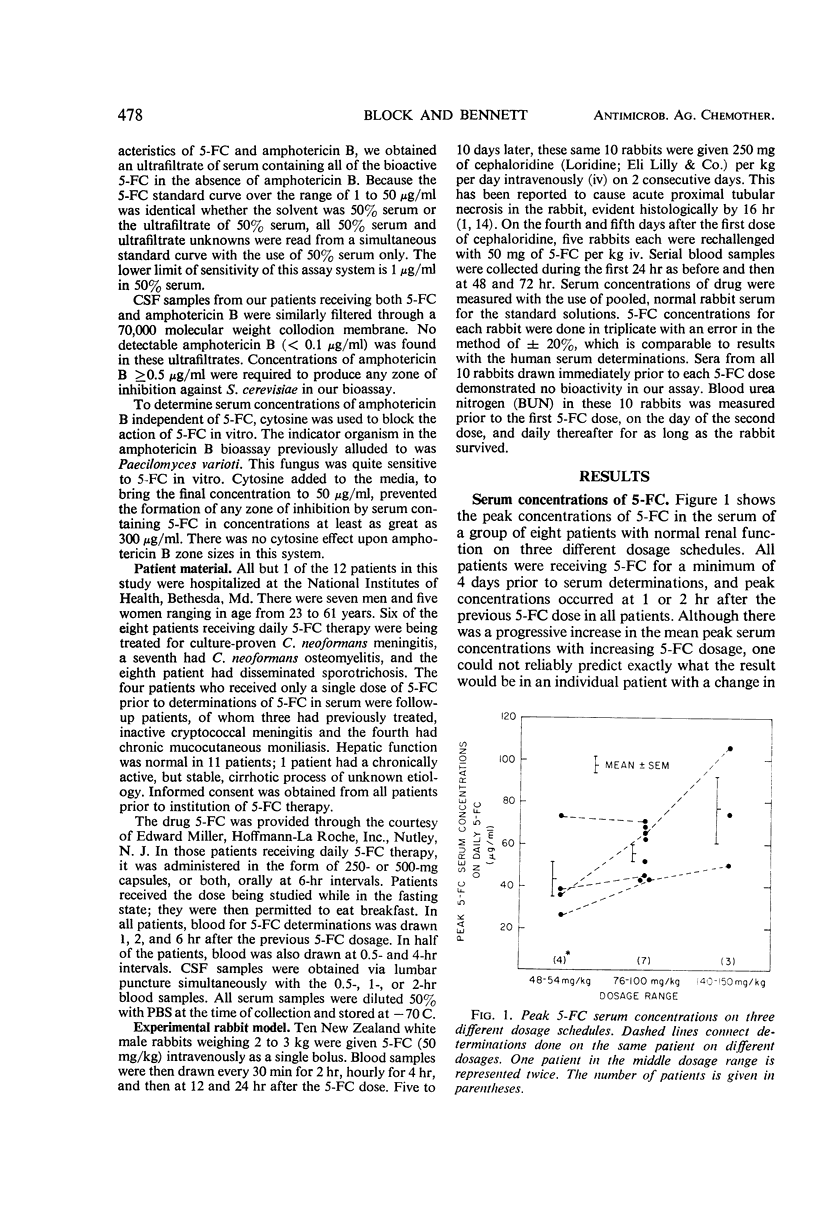
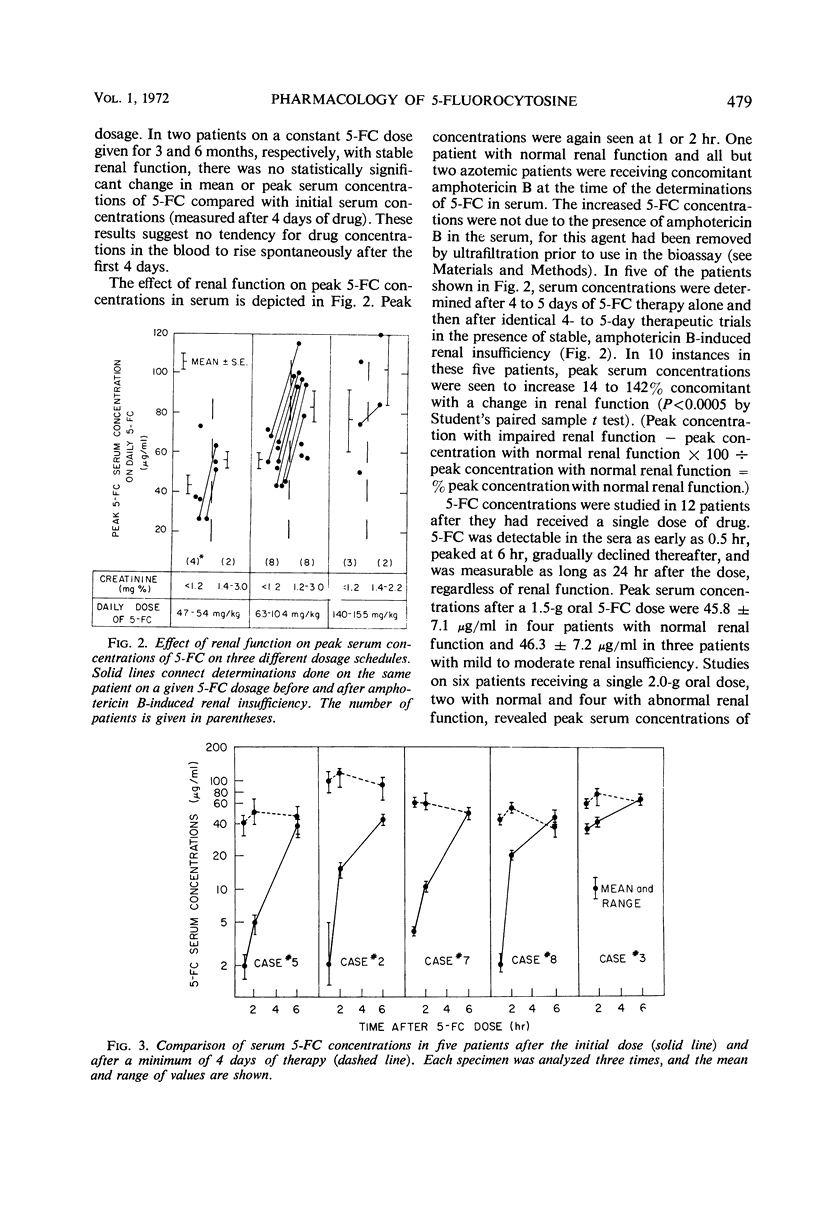
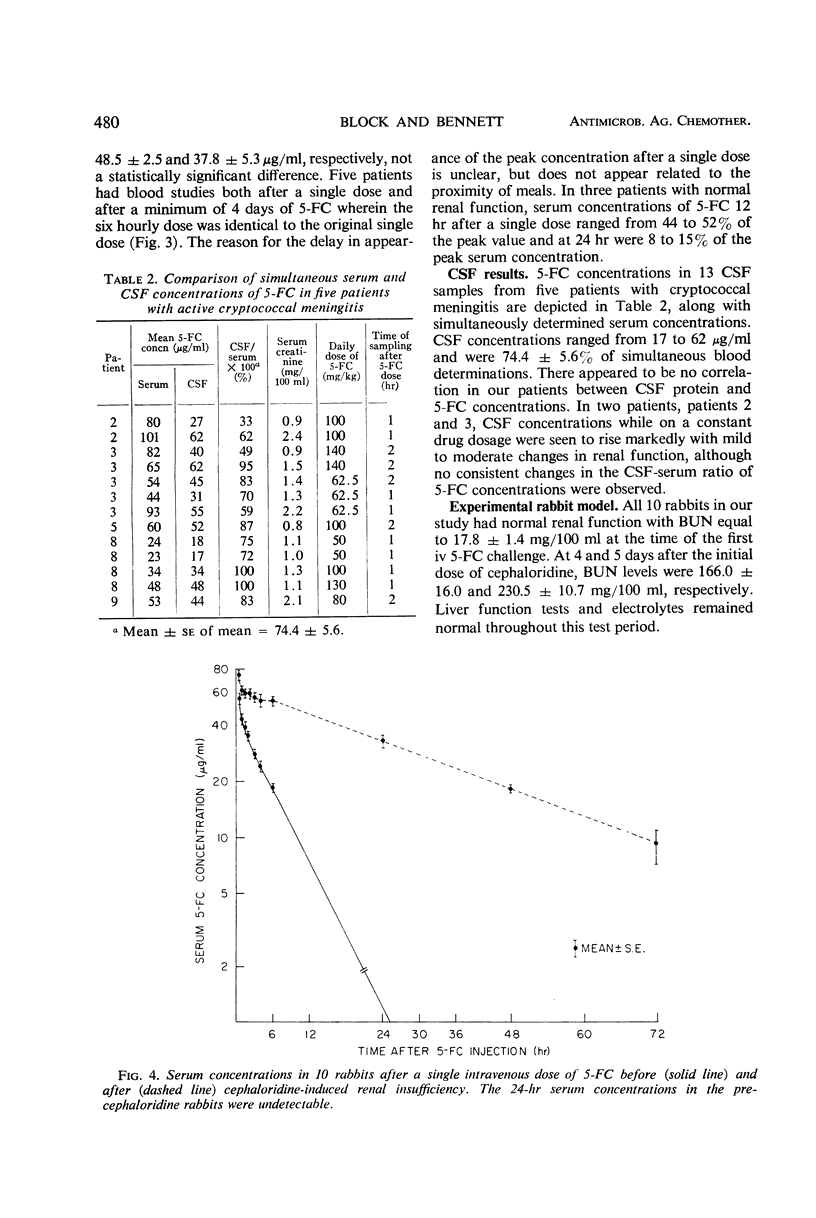
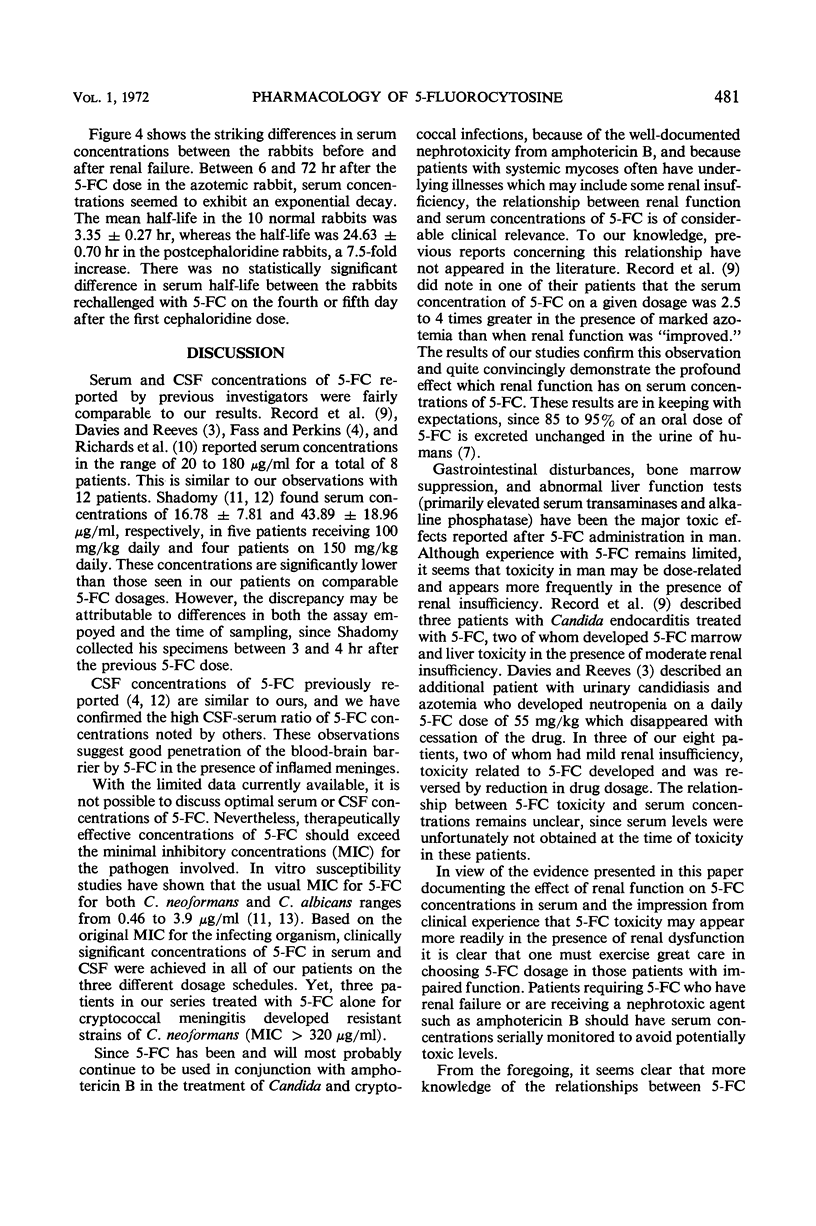
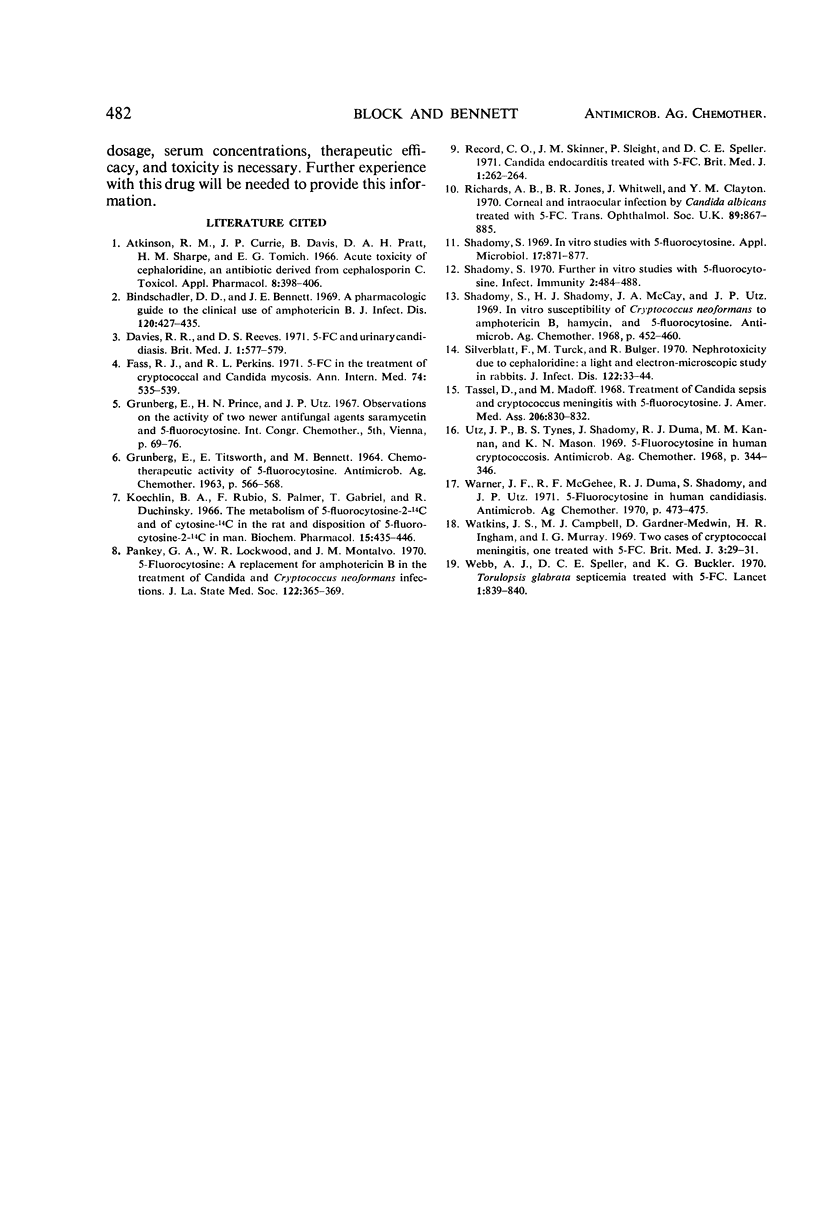
Selected References
These references are in PubMed. This may not be the complete list of references from this article.
- Atkinson R. M., Currie J. P., Davis B., Pratt D. A., Sharpe H. M., Tomich E. G. Acute toxicity of cephaloridine, an antibiotic derived from cephalosporin C. Toxicol Appl Pharmacol. 1966 May;8(3):398–406. doi: 10.1016/0041-008x(66)90050-0. [DOI] [PubMed] [Google Scholar]
- Bindschadler D. D., Bennett J. E. A pharmacologic guide to the clinical use of amphotericin B. J Infect Dis. 1969 Oct;120(4):427–436. doi: 10.1093/infdis/120.4.427. [DOI] [PubMed] [Google Scholar]
- Davies R. R., Reeves D. S. 5-fluorocytosine and urinary candidiasis. Br Med J. 1971 Mar 13;1(5749):577–579. doi: 10.1136/bmj.1.5749.577. [DOI] [PMC free article] [PubMed] [Google Scholar]
- Fass R. J., Perkins R. L. 5-fluorocytosine in the treatment of cryptococcal and candida mycoses. Ann Intern Med. 1971 Apr;74(4):535–539. doi: 10.7326/0003-4819-74-4-535. [DOI] [PubMed] [Google Scholar]
- Koechlin B. A., Rubio F., Palmer S., Gabriel T., Duschinsky R. The metabolism of 5-fluorocytosine-2-14-C and of cytosine-14-C in the rat and the disposition of 5-fluorocytosine-2-14-C in man. Biochem Pharmacol. 1966 Apr;15(4):435–446. doi: 10.1016/0006-2952(66)90254-1. [DOI] [PubMed] [Google Scholar]
- Pankey G. A., Lockwood W. R., Montalvo J. M. 5-fluorocytosine: a replacement for amphotericin B in the treatment of candida and cryptococcus neoformans infections? J La State Med Soc. 1970 Dec;122(12):365–369. [PubMed] [Google Scholar]
- Record C. O., Skinner J. M., Sleight P., Speller D. C. Candida endocarditis treated with 5-fluorocytosine. Br Med J. 1971 Jan 30;1(5743):262–264. doi: 10.1136/bmj.1.5743.262. [DOI] [PMC free article] [PubMed] [Google Scholar]
- Richards A. B., Jones B. R., Whitwell J., Clayton Y. M. Corneal and intra-ocular infection by Candida albicans treated with 5-fluorocytosine. Trans Ophthalmol Soc U K. 1970;89:867–885. [PubMed] [Google Scholar]
- Shadomy S. Further in vitro studies with 5-fluorocytosine. Infect Immun. 1970 Oct;2(4):484–488. doi: 10.1128/iai.2.4.484-488.1970. [DOI] [PMC free article] [PubMed] [Google Scholar]
- Shadomy S. In vitro studies with 5-fluorocytosine. Appl Microbiol. 1969 Jun;17(6):871–877. doi: 10.1128/am.17.6.871-877.1969. [DOI] [PMC free article] [PubMed] [Google Scholar]
- Shadomy S., Shadomy H. J., McCay J. A., Utz J. P. In vitro susceptibility of Cryptococcus neoformans to amphotericin B, hamycin, and 5-fluorocytosine. Antimicrob Agents Chemother (Bethesda) 1968;8:452–460. [PubMed] [Google Scholar]
- Silverblatt F., Turck M., Bulger R. Nephrotoxicity due to cephaloridine: a light- and electron-microscopic study in rabbits. J Infect Dis. 1970 Jul-Aug;122(1):33–44. doi: 10.1093/infdis/122.1-2.33. [DOI] [PubMed] [Google Scholar]
- Tassel D., Madoff M. A. Treatment of Candida sepsis and Cryptococcus meningitis with 5-fluorocytosine. A new antifungal agent. JAMA. 1968 Oct 21;206(4):830–832. [PubMed] [Google Scholar]
- Utz J. P., Tynes B. S., Shadomy H. J., Duma R. J., Kannan M. M., Mason K. N. 5-Fluorocytosine in human cryptococcosis. Antimicrob Agents Chemother (Bethesda) 1968;8:344–346. doi: 10.1128/AAC.8.3.344. [DOI] [PubMed] [Google Scholar]
- Warner J. F., McGehee R. F., Duma R. J., Shadomy S., Utz J. P. 5-fluorocytosine in human candidiasis. Antimicrob Agents Chemother (Bethesda) 1970;10:473–475. [PubMed] [Google Scholar]
- Watkins J. S., Campbell M. J., Gardner-Medwin D., Ingham H. R., Murray I. G. Two cases of cryptococcal meningitis, one treated with 5-fluorocytosine. Br Med J. 1969 Jul 5;3(5661):29–31. doi: 10.1136/bmj.3.5661.29. [DOI] [PMC free article] [PubMed] [Google Scholar]
- Webb A. J., Speller D. C., Buckler K. G. Torulopsis glabrata septicaemia treated with 5-fluorocytosine. Lancet. 1970 Apr 18;1(7651):839–840. doi: 10.1016/s0140-6736(70)92438-4. [DOI] [PubMed] [Google Scholar]


